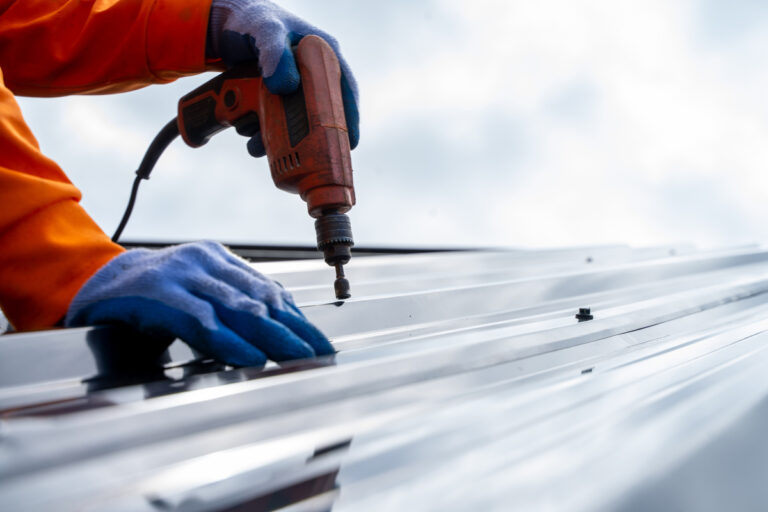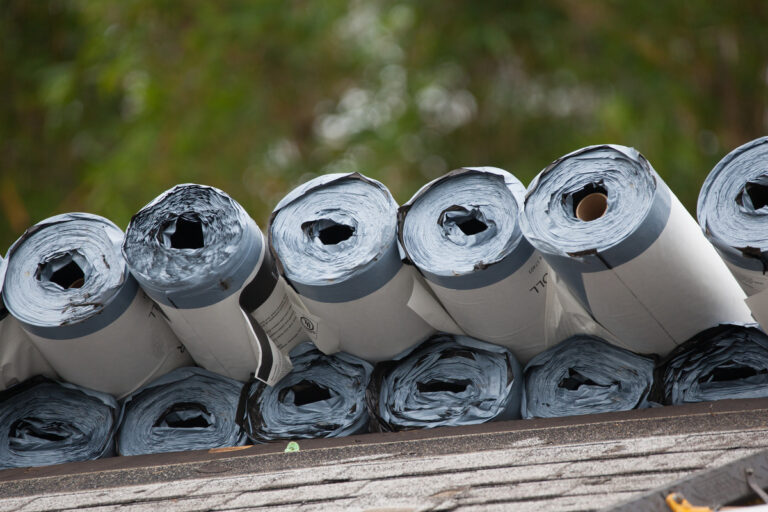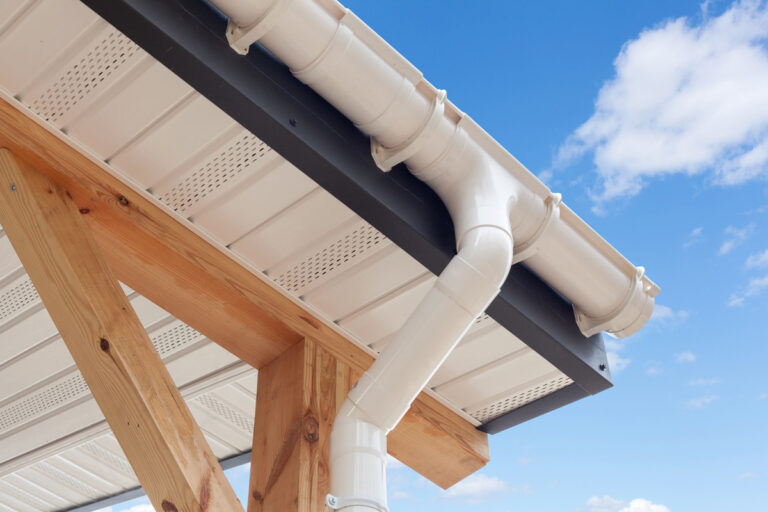6 Signs of Storm Damage: What to Look for & Next Steps
May 15, 2023
Storms can do a lot of damage to homes and businesses, which can be very expensive to fix. Unfortunately, storm damage isn’t always easy to identify, which can lead to long-term damage.
Property owners need to know the usual signs of storm damage and be able to spot them. For example, roof problems caused by wind damage or hail storms and water leaks caused by flooding rains are two examples.
Need reliable storm damage roof repair?
Read on to learn about the most common signs of severe weather that cause storm damage and how to spot them early, so you can be ready if a big storm hits your area.
Table of Contents:
- Hail Storm Damage
- Lightning Strikes
- Flooding and Water Intrusion
- Identify Roof Damage
- Missing Shingles
- Electrical Damage
- Conclusion
Signs of Storm Damage
Here are the six common signs of storm damage and how you can identify them:
Hail Storm Damage
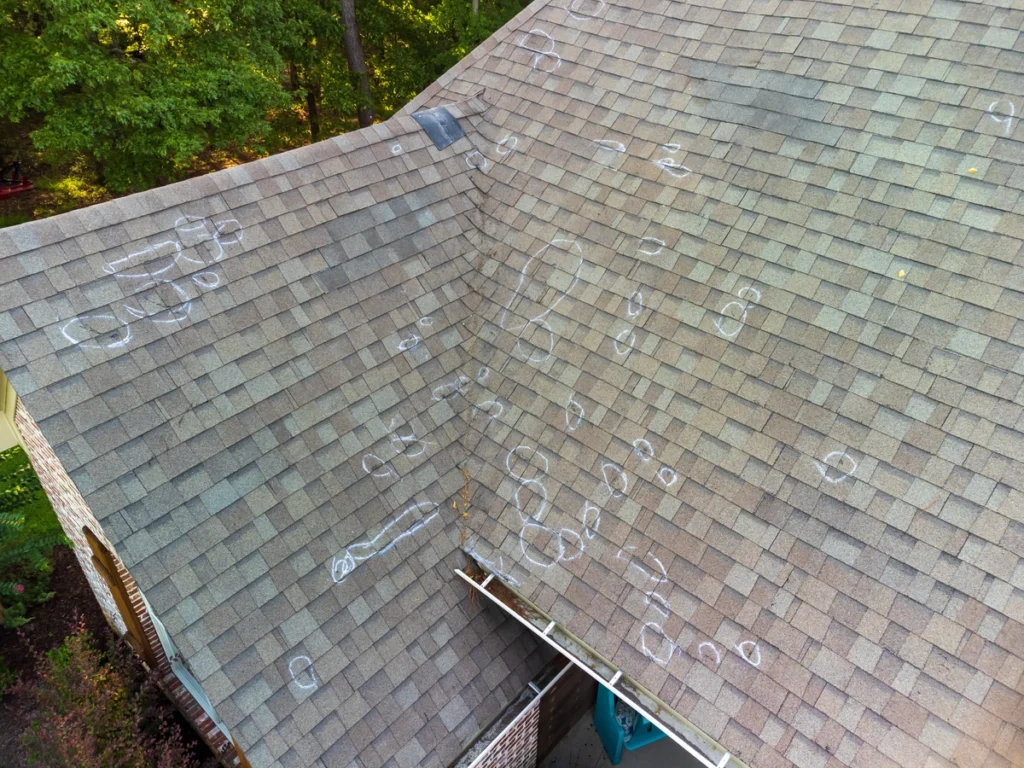
It may indicate hail damage if you notice chips, dents, or discoloration on your metal surfaces, such as your roofing or siding.
Other obvious signs of hail damage include damaged tree branches, tree limbs, loose granules falling, loose debris from your asphalt shingles roof, and broken outdoor furniture.
Preventive Measures
Homeowners may have to pay a lot to fix hail damage, so it’s important to know what it looks like and how to spot it.
To protect your home from severe winds, hail events, and other storm damage, you need to know about lightning strikes and their widespread damage.
Keep an eye on your windows and doors since they are most vulnerable to debris getting hit by hail. Also, examine the damage on your roof since most of it will show signs of damage if it gets enough force hit hard enough.
Lightning Strikes
Another obvious storm damage signs are lightning strikes which are easy to spot because they flash brightly and make loud noises.
Burned or churned objects and power lines are signs of lightning damage, as are electrical problems in nearby appliances or electronics.
If you think lightning hit an area recently, look for scorched spots on the ground near where you believe it happened. If you find burned plants or melted metal, lightning likely caused the storm damage.
Preventive Measures
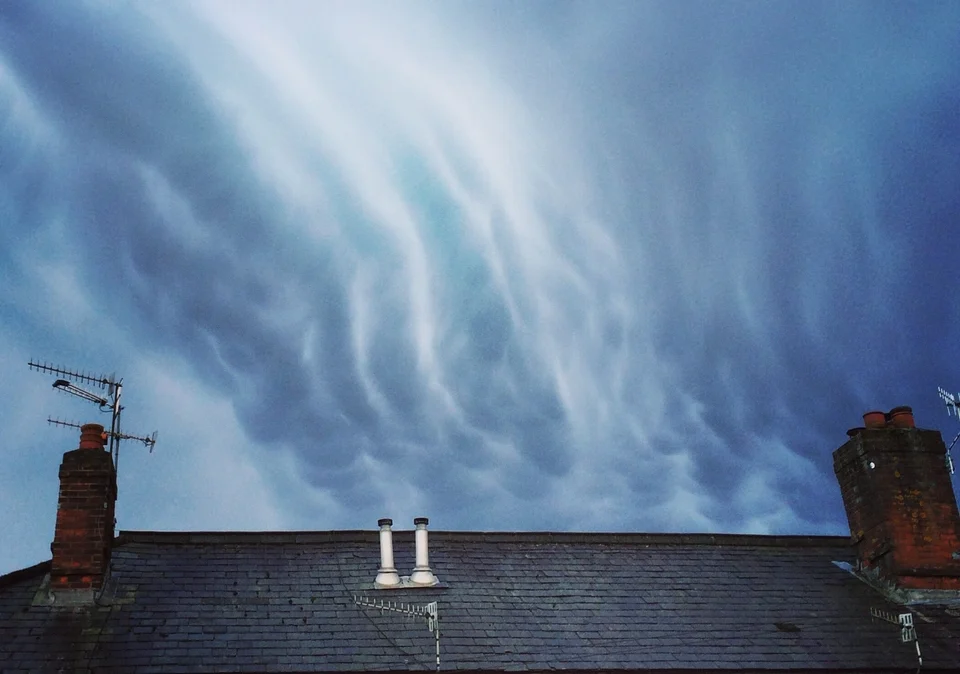
You should also check any electronic devices that might have been damaged by the strike, like lights that flicker or TVs that turn off suddenly after a storm.
Also, if you smell something strange, like ozone, that could be another sign that lightning has happened nearby recently.
When a storm is approaching, stay inside and avoid getting hit by lightning. Also, avoid objects such as large trees and cars when a storm is in progress.
If you are going to leave the house, ensure all your electronics are powered off before you leave. It will prevent electrical surges and flying debris from hitting nearby power lines, which can be caused by heavy rain, strong wind speed, or lightning strikes.
Flooding and Water Intrusion
Some common signs of water intrusion or flooding are visible stains on walls, ceilings, and floors, musty smells, and peeling paint. Also, if there’s been a buildup of mold in a previously dry area, it could be a sign that water is getting in.
Preventive Measures
If you notice that your home has water damage, such as standing water, wet spots on your furniture, and moldy smells, then you need to use a moisture meter to find the source of the issue.
It can help you identify roof storm damage and find areas that might be affected by high winds or flooding so that work can start immediately. Also, to avoid costly repairs, homeowners should take the necessary steps to prevent water damage from entering their homes.
Roof storm damage can also be an obvious sign of a problem, and there are ways to check for it before it worsens.
Identify Roof Damage
Inspecting and maintaining your roof can help identify any potential issues before they become major problems. Doing so will allow you to see potential damage and avoid costly repairs.
Also, a buildup of algae, dirt, and debris on your roof can lead to damage and more leaks. It’s important to regularly clean it to prevent this more dangerous mold and debris damage from happening.
If you have an extra budget, you can hire a professional roofing contractor for roofing material and inspection regularly to see any issues that may be difficult to see or visible damage, such as flashing or damage to the underlayment.
Check the Missing Asphalt Shingles
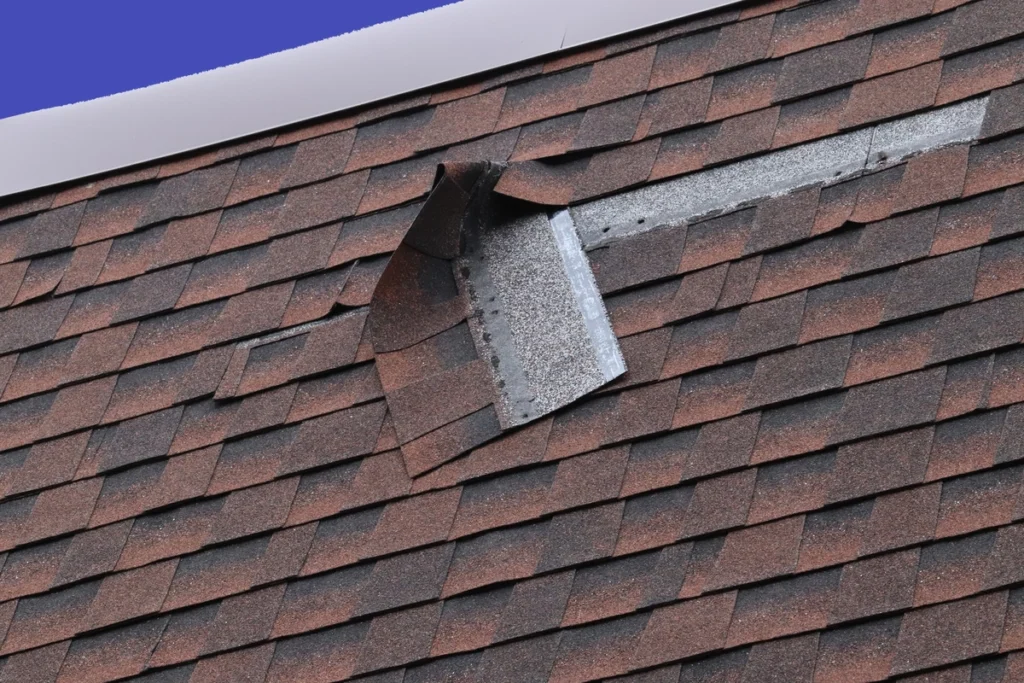
One of the most obvious signs of storm damage is missing or damaged shingles. High winds, hail, and heavy rain can loosen or tear shingles, leaving your roof vulnerable to leaks and other damage.
Preventive Measures
- Conduct a visual roof deck inspection to check for missing shingles and roof damage. Using binoculars, you can see if the shingles are missing. They will appear as bare patches on the roof.
- Inspect your broken gutters and see any sign of missing shingles.
- Go to your attic to check for any signs that it’s leaking. This issue could lead to water damage.
Hire a Professional
If you’re unsure if you have missing shingles or aren’t comfortable inspecting them on your own, you can hire a professional to examine the shingles on your roof. They will be able to identify the missing shingles and make necessary repairs.
Electrical Damage
Electrical damage can occur during a storm, particularly if lightning strikes your home or a power surge appears. Signs of electrical damage include flickering lights, blown fuses, and damaged electrical equipment. If you suspect electrical damage, contacting a licensed electrician is important to assess and repair the damage.
Conclusion
You can protect your home from further damage by learning what to look for when it comes to severe storm damage. Knowing the signs of a potential disaster can help you avoid other losses.
Be sure to inspect your property after a storm, looking for signs of damage such as missing or damaged shingles, dented gutters, cracked or broken windows, water damage, fallen trees or limbs, damaged siding, and electrical damage.
If you notice any signs of damage, contact a qualified professional for a roof inspection and to assess and repair the damage as soon as possible. Contact us for consultation.

